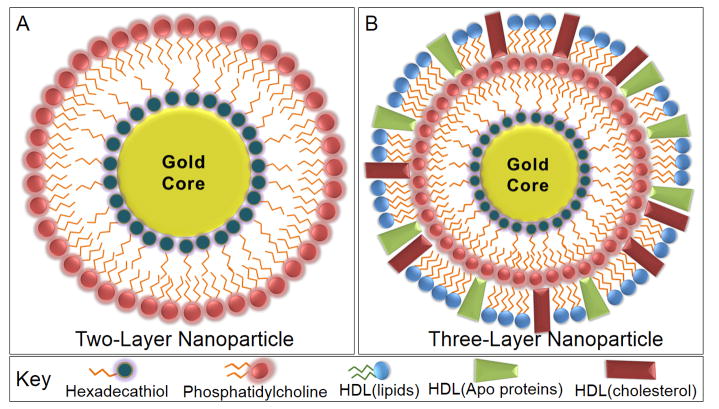Figure 1.
Nanoparticles were synthesized with either two or three layers, in which a lipid containing a hexadecanethiol (TL) head group was applied to the gold surface. This displaced the citrate stabilizer, forming a hydrophobic nanoparticle. The addition of phosphatidylcholine (PC) to the solution promoted water solubility as the hydrophobic tails of PC bound the tails of TL. The two layer gold nanoparticles (A) were compared to three layer nanoparticles (B), in which HDL was further added to alter the in vivo reactivity, drug release profile, and enhancement of tumor targeting.

